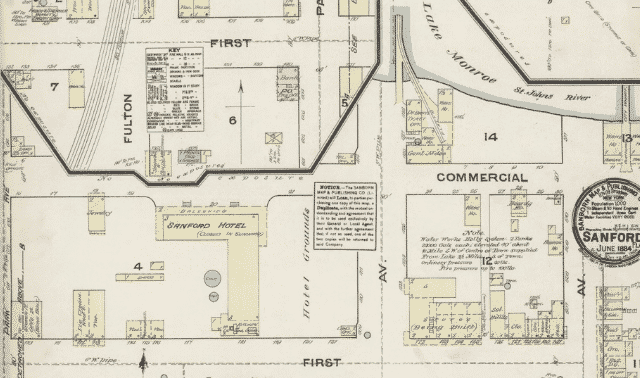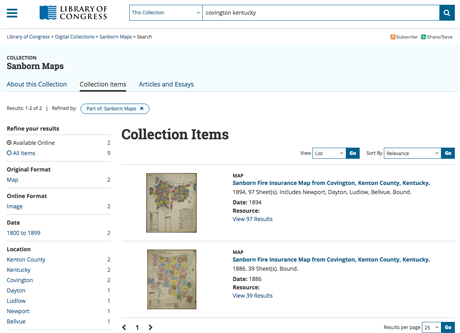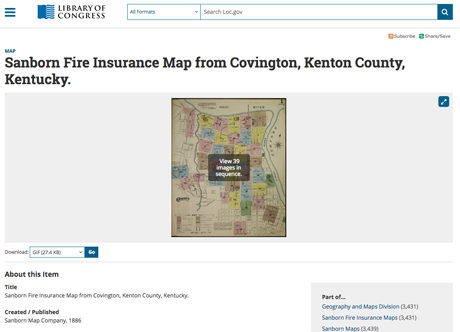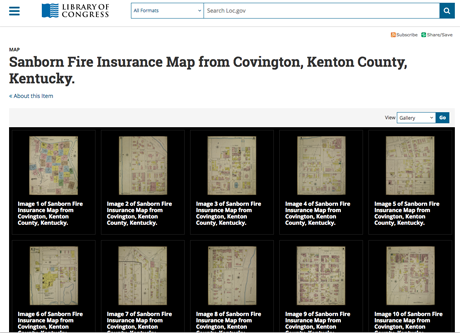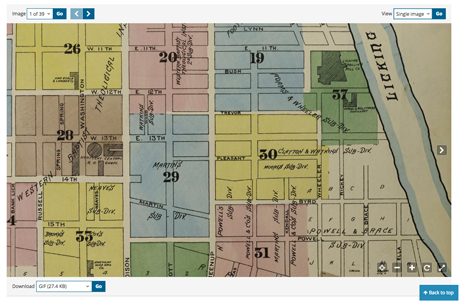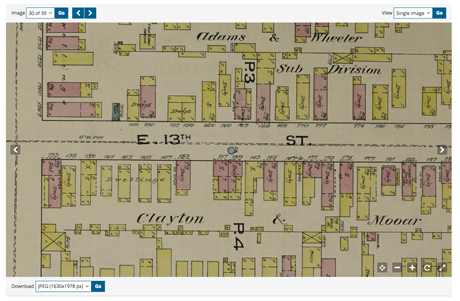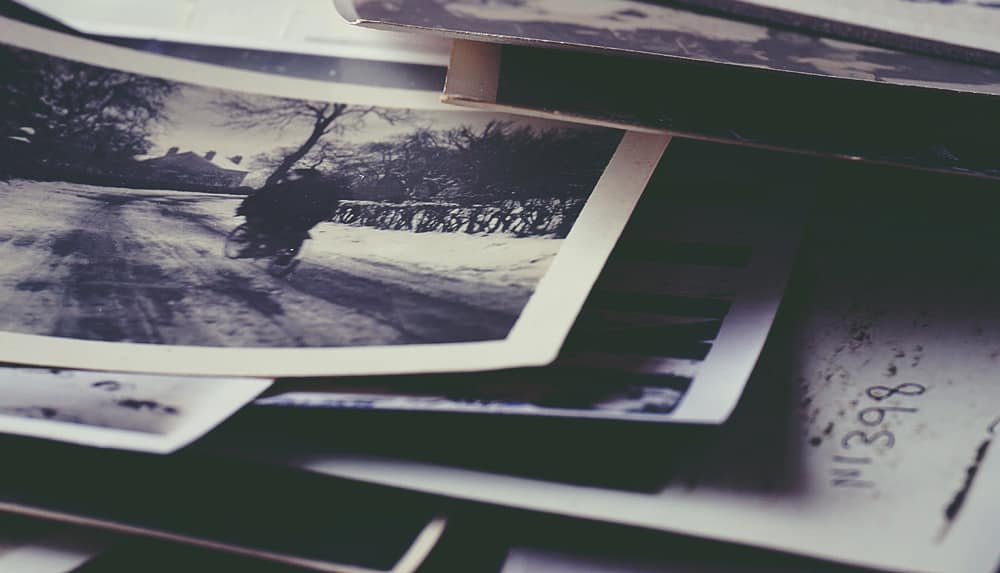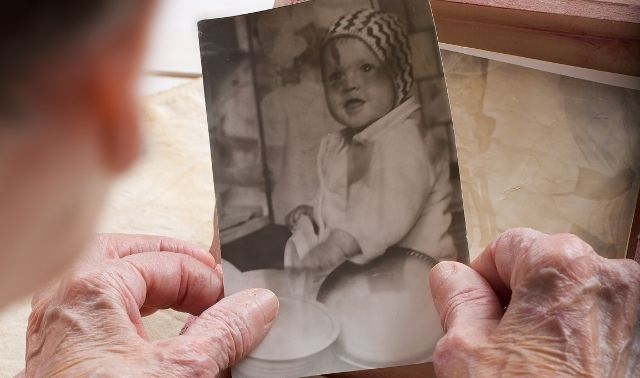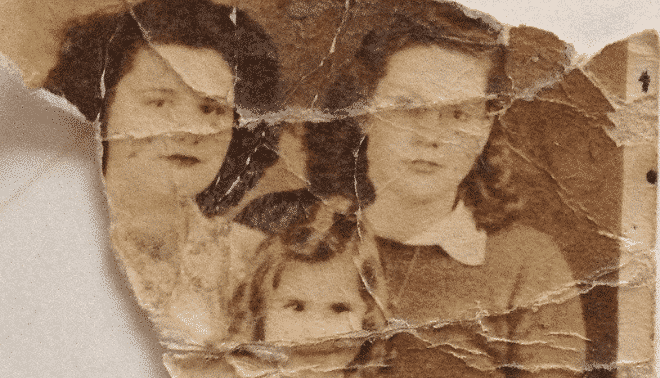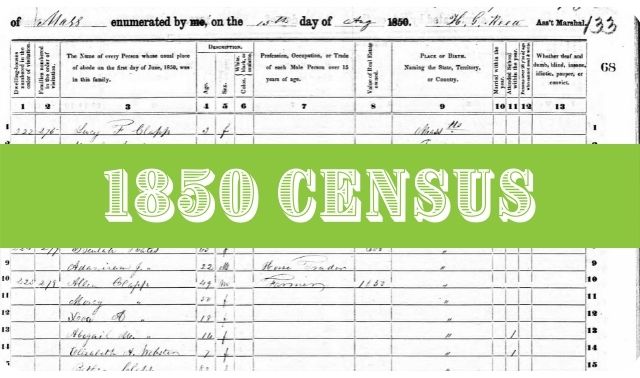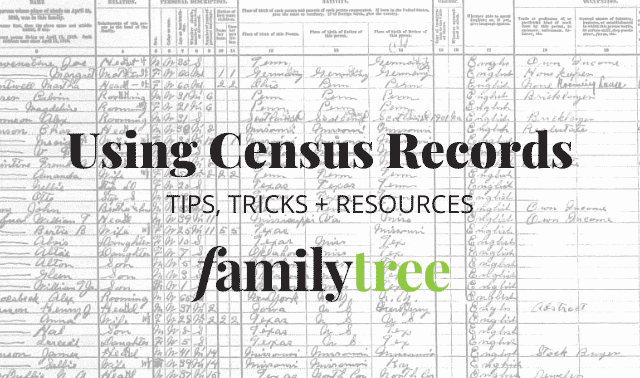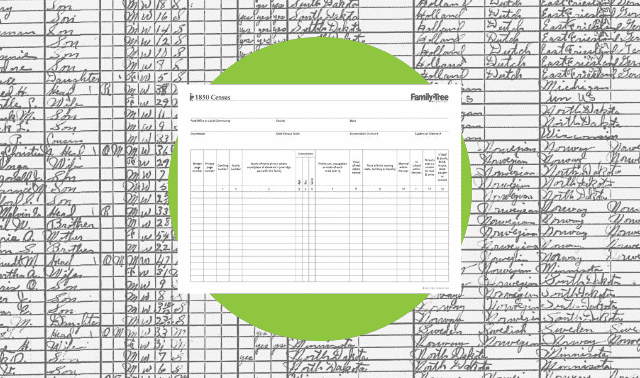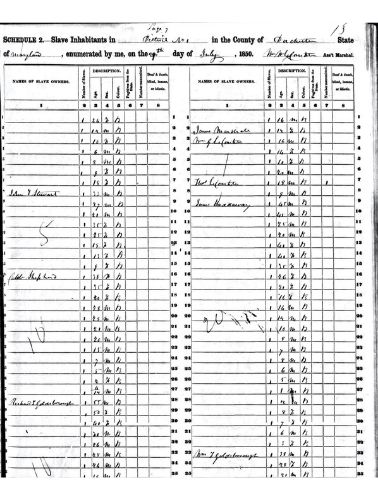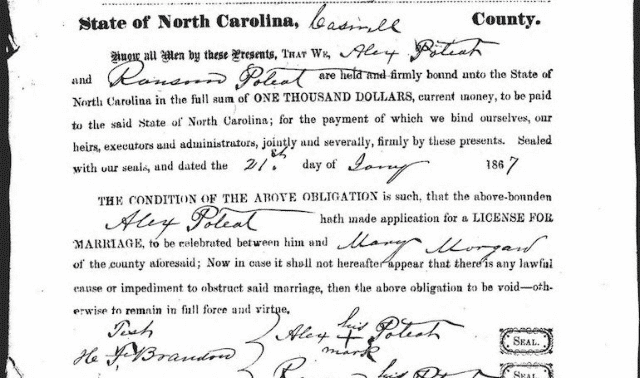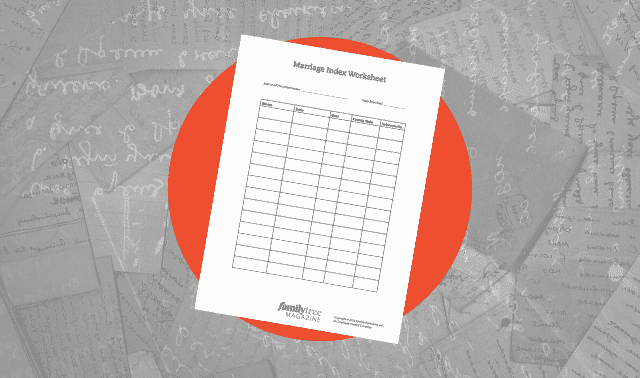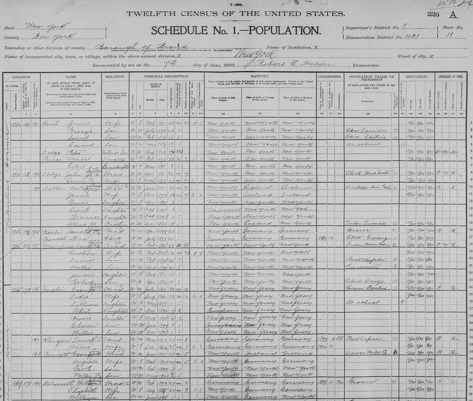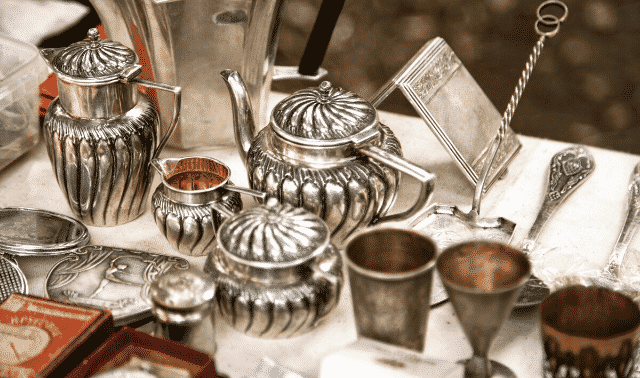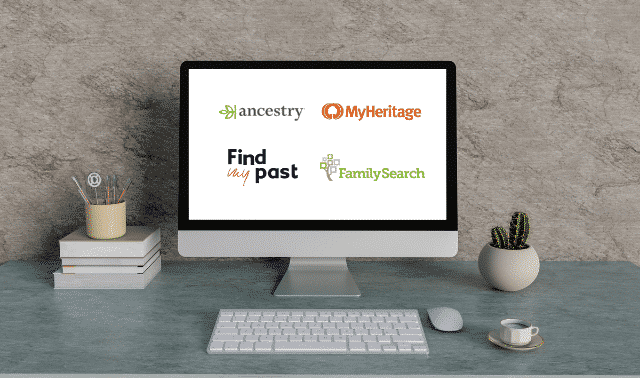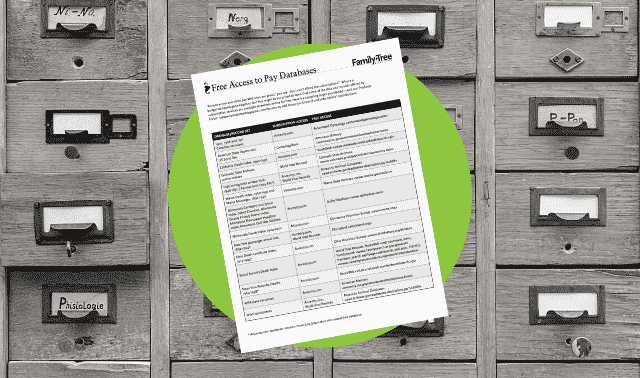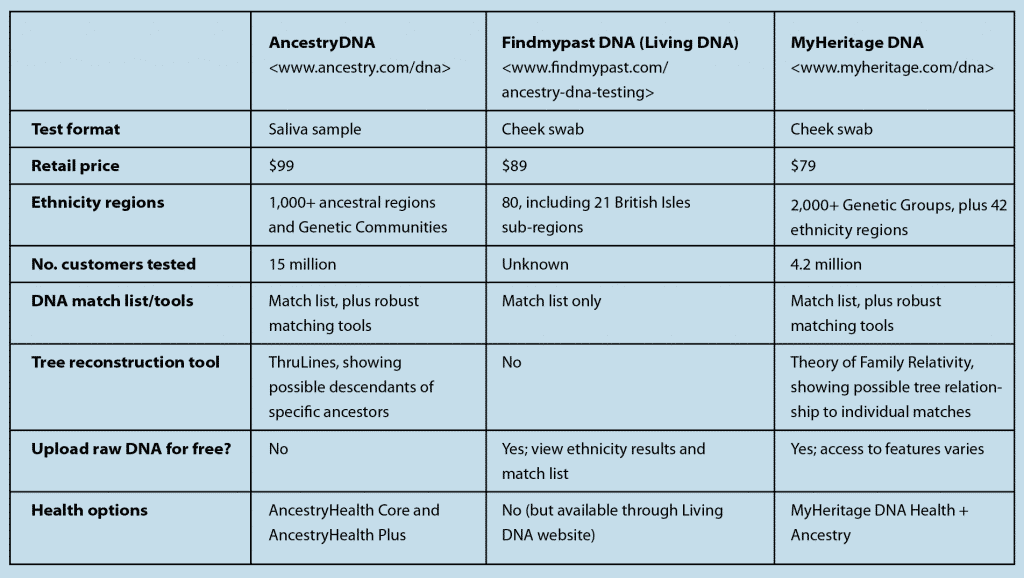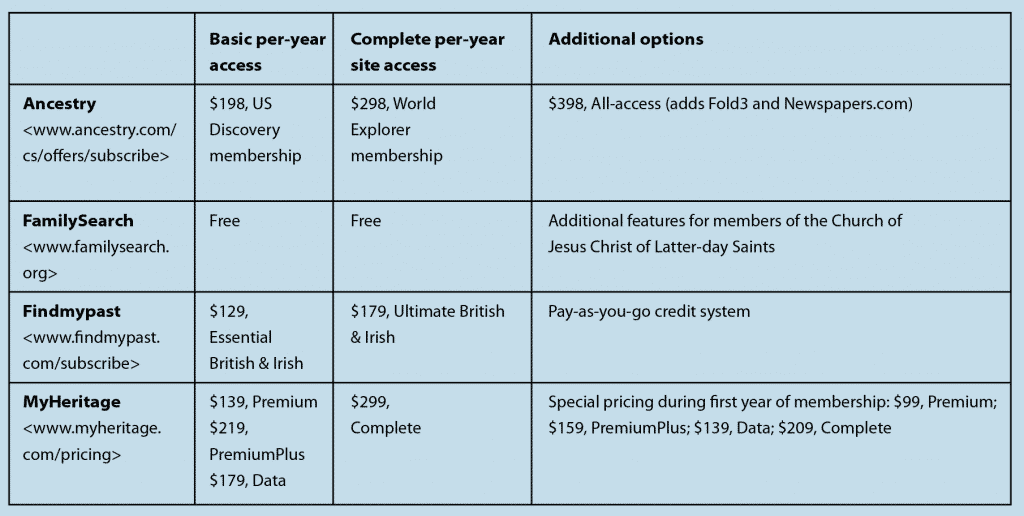By Denise May Levenick
When emptying my deceased aunt’s home to prepare it for sale, we
didn’t have the time to go through all the contents of her closets and
drawers. A brief look showed that over the years, important documents
and photos had been layered with household receipts, brochures, junk
mail, bill stubs and random bits of paper.
I transferred individual drawers to boxes and brought everything home
to examine more closely. The first box I sorted showed me that this had
been a wise decision. Mixed in with free notepads from the local
realtor, I found two cabinet card photographs of my grandmother when she
was an infant and toddler. These treasures could have been lost
forever.
Lots of family archives are handed down in the same condition as my
aunt’s: a mess of heirlooms, historical documents and, well, trash. When
you’re the one in charge of dealing with the archive, it can be an
overwhelming responsibility. You’ve just inherited a lifetime worth of
stuff from a loved one (whom you may have recently lost). Now what do
you do?
In my book How to Archive Family Keepsakes, I explain how
you can organize, preserve and pass on what is meaningful and
important—without letting inherited items take over your house and your
life. Follow these steps to organize, manage and pass on your family
archive.
1. Keep only what’s important
Receipts. Newspaper clippings. Old letters. Scrapbooks. Address
books. All have one thing in common—they’re made from paper, in its many
colors, shapes and sizes. If your inherited archive is free from paper
trash, consider yourself lucky. I’ve worked with dozens of family
collections and more than half contained moderate to extreme amounts of
this type of trash. Why? Because paper is free or cheap, it comes to
you, it has many worthwhile uses and, for many people, it’s hard to
resist picking up that vacation pamphlet or restaurant take-out menu.
But all that paper can be too much. Saving vital information is one
thing, but saving an entire lifetime of cancelled checks is quite
another. As family curators, we might have just a teeny-bit of hoarding
tendencies in our own DNA. We find value in anything our ancestors might
have touched.
Be strong. You don’t want to end up on reality television with your
closets and cabinets thrown open to the world. When it comes to paper,
you can feel just fine about throwing away quite a bit—even if it came
from Great-aunt Helen’s desk drawer. As you begin to sort and organize
your archive, ask yourself: Is this item worth the time and the cost of
archival storage supplies to be part of my archive?
I suggest you evaluate the materials and categorize them as:
Vital
The paper gives genealogical information or other key information
about a person, place or event in your family; or it confirms or refutes
family tradition. Photos, letters, vital records, military discharge
papers and the like fit this description.
Be prepared to find photos and film anywhere and everywhere. I’ve
found old photos inside books, tucked in letters, curled inside a vase,
tacked to the back of a picture frame and underneath dresser drawer
paper lining. Wallet-size photos might be in wallets or purses. Tiny
photos were often trimmed for jewelry. Cased photographs such as
daguerreotypes might be mixed in with books or other artifacts. Look
everywhere and bring the photos you find to one place where you can
evaluate their conditions and arrange them for storage. Handle these
items with care and conservation.
Adds color
This paper adds color and interesting information about a person,
place or event in your family. You might classify a bulletin from your
ancestors’ church or brochure about their favorite vacation spot in this
category.
Store these items either with the “vital” items, or move
them to their own archival box. Digitize them as needed, and see to
their archival storage needs only after the vital items are taken care
of. If the information on a paper is more useful than the actual piece
of paper, consider saving the digital copy and discarding the paper.
Not archival
If a paper—such as a receipt, bill stub or unintelligible
notes—doesn’t add personal information, don’t bother saving it in your
family archive. Just because a loved one kept it, doesn’t mean you have
to. In particular, isolate anything made of newsprint or cheap-grade,
acidic paper. It’s not worth damaging your grandfather’s last will and
testament by stacking it with a crumbling cleaning receipt.
If the information is of interest to only you, or you might need it
for insurance or other purposes, keep it somewhere outside of the
archive. For example, I have a small plastic shoebox filled with 1950s
valentines, sweet bookmarks and other bits of ephemera that I use in
handmade collage and greeting cards.
2. Preserve and protect
Review all the items in your archive box by box and consider giving
your full attention and resources to only those items that really count.
Take care of the vital stuff first. When you are tempted to save odd
bits of cool ephemera, remember your original goal to preserve your
family history.
Paper
You have several options for organizing the papers you decided to
keep. You could sort them by the family member they’re associated with,
by surname, by size or by type (such as vital records, military papers
or school memorabilia). Depending on the size of your collection, you
might be able to fit all your papers for one person or surname in a
single folder, or you might need several folders.
As you work, carefully remove staples (use a pencil eraser to bend
open the “arms,” then gently pry it out with a letter opener), paper
clips or other metal. Remove twine or rubber bands and discard. Remove
letters from envelopes and unfold them for flat storage, but leave any
brittle papers folded—don’t force them open. Keep each letter with its
own envelope, and keep collections of correspondence together.
Remove any newspaper clippings enclosed with letters, scan or
photocopy the clipping to acid-free paper and include the copy with
original documents. Keep the original newsprint clipping in separate
storage.
One good way to store paper items is placing similar-size documents
together in archival-quality file folders or paper sleeves. You can
place the folders or sleeves flat in archival storage boxes or upright
in hanging folders. It you choose the upright option, don’t allow papers
to slump inside the folder. If you’re on a budget, you can use
office-quality hanging folders as long as the documents are first placed
inside archival-quality file folders.
Label each folder with the date and the name of the family or
individuals associated with the document. To make items easier to find,
number the folders and keep a list of what’s in each one. As you place
each paper in its folder, consider scanning it to easily preserve and
share the content.
Photos
There are many ways to organize your photos. After sorting through
the collection, decide whether to organize photos by family, date,
subject, event, place, photographer (for example, photos Mom took), size
or type of image (such as daguerreotype, tintype, etc.).
Your storage strategy depends on the type of image you have. Don’t
worry if you have difficulty determining whether your photos are
daguerreotypes, tintypes or ambrotypes. The care for any cased image is
the same: Store these in close-fitting individual photo storage
envelopes or sleeves inside an archival box. It’s important that both
the envelopes or sleeves and the box fit the photo snugly to prevent
images from sliding and scratching.
Keep prints in sleeves or envelopes made of archival-grade paper or
clear plastic. Store same-sized prints together, stacking them carefully
to avoid scratching. Place rare prints in individual sleeves. Store
these envelopes vertically in same-sized archival boxes.
Color photos are especially prone to fading when exposed to light,
but even images stored in the dark may develop “color shift” and a
yellowish haze. Fortunately, by scanning and digitally restoring old
prints, you can bring back much of the original color. Store old prints
in archival paper or plastic sleeves inside photo storage boxes. Keep
these in a cool, dry place. The cooler your keep your photos, the longer
they will last, but don’t refrigerate them or put them in the
basement—humidity causes its own problems. A shelf in an interior closet
in the living area of your home is best, and check the collection
regularly for pests.
Cataloging your keepsakes
After your demise, will your family know the importance of that odd
assortment of china you inherited from your grandmother? Or will they
(gasp!) sell your precious family treasures at a garage sale? Telling
family members the objects’ importance can’t hurt, but they might not
remember the story you’ve told about each item. Instead, make an
inventory of your family artifacts. For each keepsake, include details
such as:
- how it came into your possession
- who owned it originally
- when it was made
- what family stories are associated with the heirloom
Keep this with your important papers.
You also might want to catalog heirlooms that aren’t in your
possession, so you and future generations know family treasures’
whereabouts. You can start with the handy Heirloom Inventory and History
form (a free download), or create your own inventory from scratch. For
each item, include the relative’s name, contact information, a
description of the object, the item’s history (who owned it originally,
how it was passed down in the family, how the original owner got it) and
stories associated with it. Next, photograph the objects from different
angles and add the pictures to your inventory.
Here’s a sample from one family’s heirloom inventory:
Dark blue Stafforshire tea and
coffee set, circa 1840. Set consists of a coffeepot, teapot, creamer,
sugar bowl, and four cups and saucers. All but the sugar bowl and
creamer, purchased at a later date, belonged to the family of Emma
(Ludwig) Rhoads and were used at their farm at Yellow House, Pa. Present
owner: [name and address].
You can even inventory missing family heirlooms. Make the descriptions as complete as possible:
Unfinished and unsigned needlework
sampler, probably stitched by Ellen M. Lorah, daughter of Mary (Rhoads)
Lorah, Broomfieldville, Berks Company, Pa., who attended the Linden
Hail School for Girls in Lititz, Po., in 1860, when she was 16. Floral
decorated, about 6 ×18 inches. Current owner. unknown.
Make at least two copies of your family history inventory and any
pictures of heirlooms. Keep one copy with your genealogical files, and
store another copy with your important papers, so it will stay in the
family. If you have a family history Web site or publish a family
newsletter, you might want to post the list of family heirlooms,
especially if it includes unidentified or lost items.
Sharon DeBartolo Carmack, from the May 2004 issue of Preserving Family History.
3. Make homes for heirlooms
“Artifacts” doesn’t describe only objects excavated on an
archeological dig. Curators and collectors use the term for the many
manmade objects that acquire historical or artistic significance. For
the family historian, artifacts may assume emotional and sentimental
value, as well. Your great-grandfather’s pocket watch and your aunt’s
Depression-era quilt are examples of the kind of artifacts you might
find in your family archive.
Preserving inherited artifacts isn’t necessarily complicated,
especially if the object is on display or used in your home. Some items
need a bit of extra TLC, but most will likely be just fine with the same
care and attention you give everything else in your home. If you’ll be
storing the artifacts, take the standard precautions against extreme
temperatures, humidity and pests.
No matter what type of artifact you’re handling, always wash your
hands before touching it, and remove rings and bracelets to avoid
nicking or snagging the item. Here’s how to store various artifacts:
- Art: Museums recommend rotating displays of
valuable pieces—six months on display, six months resting in storage—to
prevent overexposure to light, dust and other environmental elements.
- China and collectibles:
Don’t wrap china in newspaper or acidic newsprint paper for long-term
storage; this can cause discoloration. Use acid-free, lignin-free tissue
instead. Keep breakables in sturdy, crush-resistant archival boxes.
- Furniture: Spray
furniture polish is convenient, but it’s a poor choice in caring for
wood. Use a clean, slightly damp cloth instead, and try to keep pieces
out of direct sunlight.
- Musical instruments:
Use a soft cloth to remove dust. Regularly playing an instrument is the
best way to monitor its function and repair needs. Without proper
maintenance, that violin or brass horn can easily lose its function to
make music and become simply another interesting artifact.
- Quilts and samplers:
Roll large fabric items, such as quilts, around an archival tube to
avoid creases. Cushion and protect the surface with archival tissue. Use
a piece of clean washed muslin longer than the roll to form a
protective outer layer: Roll the muslin around the item one and a half
times, then tuck the ends into the ends of the tube. Gently tie cotton
twill tape or muslin strips around the roll to secure.
- Clothing:
If it’s in good condition, launder clothing such as wedding dresses,
uniforms and christening gowns after use and hang to store (consult a
professional cleaner for antique or intricate items). To support the
garment, wrap wooden hangers in polyester quilt batting covered with a
muslin sleeve. Stuff archival tissue in sleeves and legs for additional
support, and place the entire garment in a muslin garment bag of the
same size as the item of clothing. Don’t use plastic or vinyl garment
bags.
- Military insignia and scouting memorabilia: Store
protected with unbleached muslin or acid-free tissue inside archival
boxes. For display, don’t use a wool backing—wool contains sulfur that
will eventually damage medals. Cotton is a better option. Keep the
display away from direct sunlight.
Just as you can scan photos and documents, you can use your digital
camera to photograph family heirlooms. The photos would be a terrific
addition to an inventory of the heirlooms in your possession (download an inventory form here).
Family archives are a great resource for family historians and a
wonderful legacy to pass on to future generations. The time you spend
organizing and preserving your archive will help you—and your
family—take full advantage of all of the genealogical information and
memories those old letters, photos and keepsakes hold.
Value Judgments for Heirlooms
What kind of value do your items have? Value is commonly understood
as something’s merit, worth or importance with regard to money, history,
culture, art or sentiment. The second half of the definition is often
unstated, but it is essential in any evaluation of value.
Monetary Value
Monetary value refers to the price an item would bring on the open
market, or its fair market value. Scarcity and condition play a large
part, as does the current popularity of the item as a collectible. An
appraiser can assess an item’s monetary value so you can have it
insured.
Monetary value often is different from intrinsic value. Your family
may place an intrinsic value of $500 on your grandmother’s crystal candy
dish—that is, you wouldn’t consider selling it for anything less. But
an appraiser may put the monetary value at $80 because it’s old but not
rare, and that’s what similar dishes sell for on eBay. This also may be
the insurance value of the candy dish and your tax deduction if you
choose to donate it.
Historical and Cultural Value
Historical and cultural value is determined by events, people and
places associated with an item. It may or may not carry a corresponding
monetary value. Your grandmother’s diary, for example, may have little
monetary value compared to its historical value as a window into the
life of a WWI Army nurse.
Even so, museums seek out and purchase items for their collections,
which helps establish the cash value for historical artifacts. The
current black market in historical and cultural items has created an
entire industry based on selling stolen and forged historical artifacts.
Artistic Value
Artistic value may be high if a piece shows skill in painting,
sculpture or other media, but not all “good” art acquires a high
monetary value. In general, the artist, school or subject matter must
already be famous. Sometimes nice paintings are just that—enjoyable
paintings of no exceptional monetary or historical value.
Sentimental Value
Sentimental value is most familiar to the family historian. Many of
us cherish “worthless” little trinkets for the memories they inspire. It
isn’t uncommon for families to haggle over who gets the cookie jar
after Grandma’s death. It’s not the thing, it’s the memories that go
with it.
Tip: Having trouble letting go of papers from
Grandma’s house? Separate items in a box and see if other family members
want anything. If no one else finds value in the papers, you may feel
easier about tossing them.
Denise Levenick blogs about organizing and preserving family archives at The Family Curator.
A version of this article appeared in the July/August 2012 issue of Family Tree Magazine .

